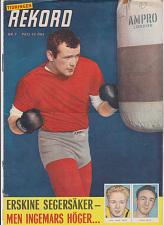during the mid- to late-1920s, and whose iconic shots of airmail pilots are instantly recognizable, even if Dewells own name is not.
I think Dewell had a great way when he photographed people of really capturing the moment and their personalities says Keiser.
I always had the impression that Dewell just kind of grabbed people as they went past. Kind of like, Oh, here, just give me a moment and stand here. So that sense of people sort of paused in the midst of their activities is evident in his photographs.
There's an image of a laconic Harold C. Brown, who, according to Nancy Pope, a museum specialist with the Smithsonian National Postal Museum, tore down two fences
nearly 250 feet of wire and posts while making an emergency landing on February 26, 1923. His aircraft then ran into a soft and muddy wheat field where it became stuck. Mr. Klenke, the owner of the property, helped Brown dig out his plane and get it back into shape, and even helped him take off again. The postal service received a bill from Klenke for $30.90 for the damage Browns landing made to the farm.
Theres a nonchalant James Murray, posed with his helmet flaps askew. Murray would walk 14 miles through the snow after his airplane crashed near the Medicine Bow Range in 1920. Trees kept getting closer he wrote in his report of the crash. I gradually climbed the machine full engine, until it stalled. The treetops were 50 feet away. I cut switches and pancaked into
Dewell's photographs of handsome William Wild Bill Hopson are among his best known portraits. Pope notes that Hopsons popularity with his fellow pilots and management helped him sail through dozens of forced landings without the reprimands and demerits other pilots would have earned.
I know Dewell went up in an airplane at least once says Keiser, because there are a few photos that are taken from the air looking out along the airmail route, looking down at one of the beacon towers somewhere between Omaha and Cheyenne. And its funny because the shots are very grainyall of his other stuff is really sharp and clear, but obviously he was working under adverse conditions.
After Dewells death in 1954, his widow gave his photographs and negatives to the Nebraska State Historical Society (NSHS). Those images associated with aviation and airmailsome 500 photographs in all were transferred to the National Air and Space Museum in 1958. The NSHS, which holds the bulk of Dewell's collection, lists hundreds and hundreds of images of the types of subjects that youd expect a commercial photographer to make in the heartland: hogs, threshing wheat, images of soil erosion and corn fields, promotional shots of department stores, roofing companies and hotels. But there are also portraits of boxers (including Jack Dempsey), and movie stars (including Tom Mix).
In her office within the Archives Division of the Smithsonian National Air and Space Museum, Keiser is following up a research lead. Within the U.S. Army Signal Corps photograph collection she has discovered an image taken by a U.S. Army Signal Corps photographer during World War I. His name? Nathaniel Dewell. I think it's the same guy. The age would be about right for him to have been in World War I as a fairly young man, and then come back after the war and set up a business as a photographer.







 - United States
- United States 









